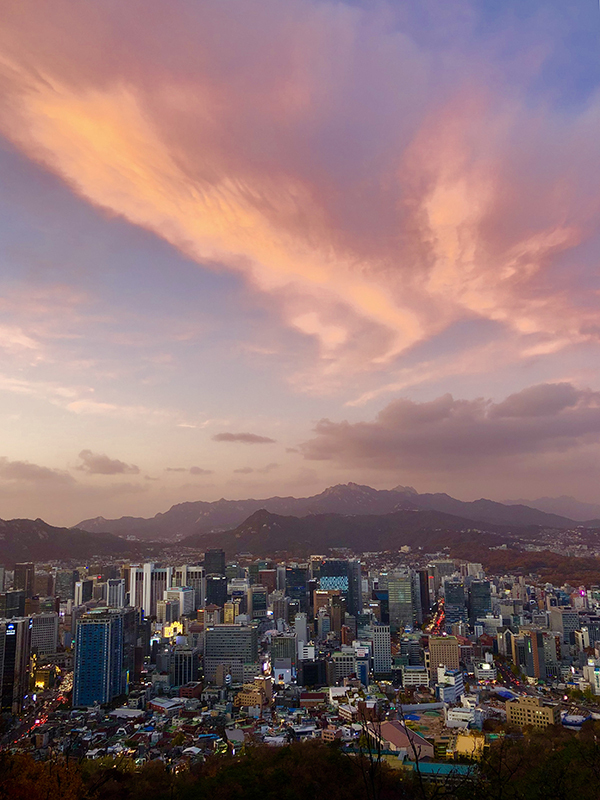South Korea Vacation: Seoul & Jeju Island
Enjoy a luxury and authentic South Korea Vacation in Seoul and on Jeju Island. Called the “Hawaii of Asia,” Jeju Island is a fascinating place to learn about and meet a community of women on UNESCO’s World Heritage List for their Intangible Cultural Heritage. The landscapes here are also mind-blowing, with waterfalls and volcanic terrain reminiscent of Maui and the Road to Hana. Here you can experience the famous Haenyeo female divers, fabulous seafood, tea and beautiful waterfalls and beaches. Juxtapose this island visit with time in vibrant Seoul, where you’ll see magnificent palaces, try tasty street food and Korean BBQ and learn about ancient and modern traditions.
South Korea is one of our favorite travel destinations! If you love to eat, you’ll also love the food here. Delicious Korean BBQ, Korean beer and snacks galore, you’ll feast on Seoul in more ways than one. History buffs will truly relish in the history and culture to be found in South Korea. Your knowledgeable guides will share with you the back stories from each destination on this itinerary for a truly eye-opening adventure in South Korea… complete with an unusual temple stay.
Talk with our Preferred Travel Advisor to book this South Korea trip or customize it to fit your needs or that of your group!
10 days/ 9 nights starting at $9,066 USD* per person based on double occupancy
* Daily inclusions listed below. Itinerary pricing based on double occupancy. Prices are subject to fluctuations due to exchange rates at time of payment. Prices and reservations are not guaranteed until a deposit is placed. We are happy to customize this itinerary for you!
South Korea Vacation Itinerary
Day 1: Arrive in Seoul
Meet & Greet and airport assistance
Meet our greeter who will wait for you with a sign at the airport after customs formalities and baggage claim.
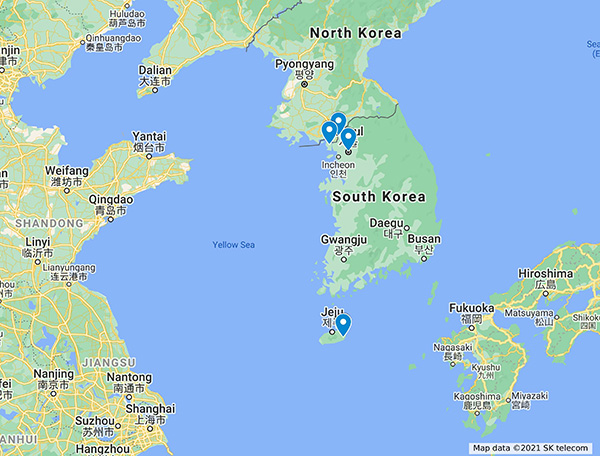
Private transfer to your hotel. Our travel advisor can help you decide which is the best hotel fit for you.
Option 1 Check in at luxury Virtuoso Conrad Seoul or Four Seasons
Conrad Seoul defines a new world of luxury, sophistication and service in Korea. Strategically located, Conrad Seoul occupies one of the four towers of the renowned International Finance Centre (IFC) in Yeouido Business District. Conveniently attached to Seoul’s subway system and an upmarket International lifestyle mall, Conrad Seoul is the closest luxury hotel to both International Airports.
Admire stunning landscaped parks such as the Yeouido Park and escape to nature for a relaxing retreat. Yeouido is a leader in environmental and green technology. Conrad Seoul has been accredited by the Korean Green Building Council for its eco-friendly facilities.
Conrad Seoul is a 2017 TripAdvisor Certificate of Excellence award recipient. Your stay includes a variety of perks, including daily breakfast for two.
Option 2 Check in at Lotte Hotel Seoul
Set in the greater Gangnam area, the Signiel Seoul is located in the landmark Lotte World Tower, soaring high above the city. The 123-floor Lotte Tower stands as the tallest tower in Korea and the fifth tallest in the world. Floors 76-101 are home of the Signiel Seoul Hotel overlooking the Seokchon Lake, Hangang River, and downtown Seoul.
The Signiel hotel Seoul aesthetically-inspired rooms and suites – with spectacular skyline views – combine classic and contemporary design, harmoniously blending influences of East and West. Its world-class facilities a lounge, the largest champagne bar in Asia, and an exceptional spa, as well as a fitness center and a swimming pool. The hotel’s unprecedented level of luxury guarantees guests will enjoy unforgettable moments above the clouds, where refined elegance and stylish comfort converge.
The hotel is known as a gourmet hotel with its 1-star Michelin Korean cuisine restaurant. The lounge is renowned for its customizable Escoffier burger.
The hotel is also famous for its night panoramic views of the mesmerizing cityscape from all rooms.
The rest of your day is yours to relax, nap, enjoy your hotel amenities or start to enjoy Seoul.
Day 2: Seoul Landmarks
9:00 am – Korean Time
Morning: Gyeongbokgung Palace and Guard changing ceremony-Hanbok experience
After breakfast, meet your dedicated guide for the day. Head to Gyeongbokgung Palace.
Built in 1395, Gyeongbokgung Palace is the most beautiful, and remains the largest of all five palaces, built after King Taejo, founder of the Joseon Dynasty. The King had the capital moved to Hanyang during the fourth year of his reign (1395).
Its name, literally meaning “great fortune,” originated with a phrase of Sigyeong (Book of Songs), quoted by Jeong Do-jeon, an eminent scholar in the Joseon Dynasty. In 1412, King Taejong had the lake expanded in Gyeongbokgung Palace and built Gyeonghoeru Pavilion to hold parties and welcome foreign officials visiting the country.
Hanbok experience and Guard Changing Ceremony: Experience the Guard Changing Ceremony as you are dressed up in a traditional Korean outfit. The changing of the guards here reminded us of Buckingham Palace. It’s a true treat!
*10:00-10:20 Guards changing ceremony- Closed on Tuesdays

Serenity in the gardens of Gyeongbokgung Palace in Seoul 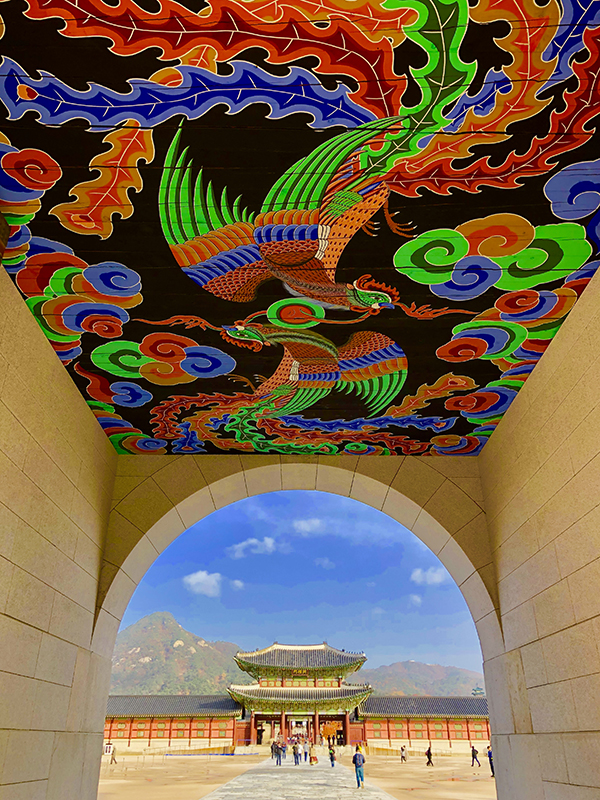
Stunning Gyeongbokgung Palace in Seoul 
Traditional outfits at Gyeongbok Palace
12:00 pm – Korean Time – 1 hour 30 minutes Market and street food
Follow your guide at Gwangjang traditional street Market, one of the oldest and largest traditional markets in South Korea, with more than 5000 shops and 20,000 employees. This was the first permanent market built in Korea and while it used to sell a little bit of everything, nowadays it’s most well known for its street food. Enjoy the array of diverse Korean street food.
*Lunch included (Food tasting). We recommend definitely trying the Bindae-tteok or mung bean pancakes and Hotteok, Korean honey pancakes!
Continue to 20th century architecture: Namsan Seoul Tower
While jumping from ancestral architecture to modern Seoul, continue your trip in time with your guide and visit Namsan Seoul Tower or N-Tower. This spot has some of the best views of Seoul and is one of Seoul’s larger green spaces. Go up high to view Seoul from above.
Dinner on your own. Enjoy some Korean BBQ!
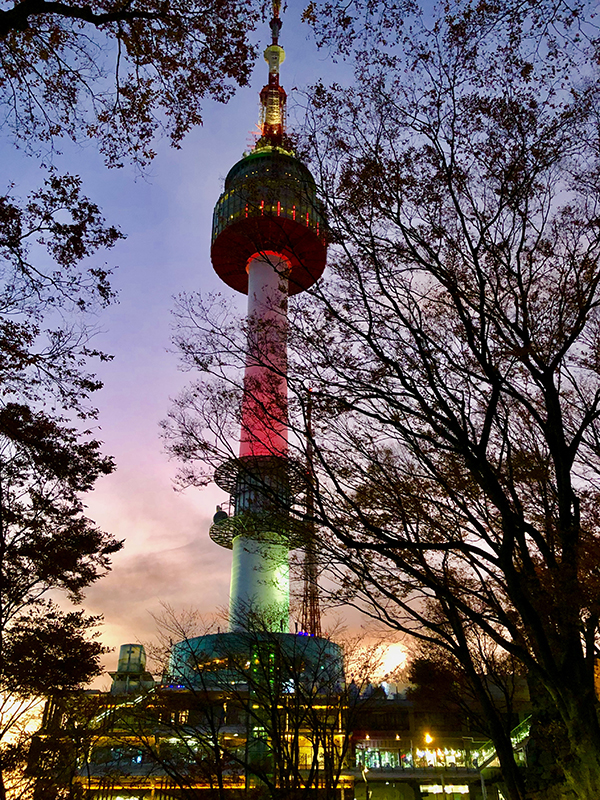
N-Tower at sunset 
Sunset in Seoul from N-Tower 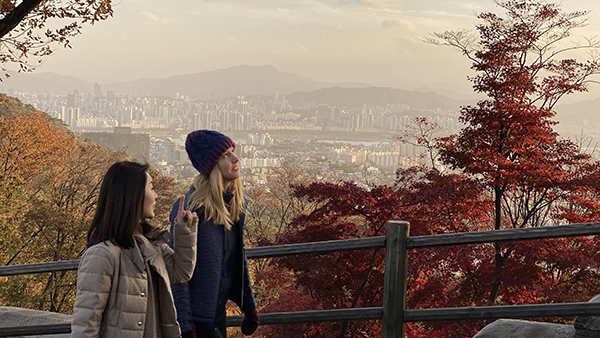
Green spaces at N-Tower in Seoul
Day 3: The DMZ & 20th Century History in Seoul
The DMZ: a must-see
After breakfast, embark on a historical and unique visit: the DMZ, also called the “Demiteralized Zone”. Driving distance: 100 miles
The Demilitarized Zone, more commonly referred to as the DMZ, was set up and agreed upon during the armistice agreement. This is a chilling, but important place to visit.
The international spotlight today is on the Korean Demilitarized Zone (DMZ) where hectic diplomatic parleys are going on between the leaders of the two Koreas to reduce tension in the peninsula. While the Cold War may be officially over, millions are still grappling with its legacy to this day.
The DMZ, which separates North and South Korea, now remains the last vestige of that conflict. The DMZ is a buffer zone, which was established on July 27, 1953, when the armistice deal was signed between the two Koreas. Technically, the two nations are still at war with each other in the absence of a peace treaty.
PLEASE NOTE: Hotel pick up and private transfer to Imjingak from where you will join the tour with other tourists as no private tour is allowed by regulation.
Dora Observatory:
Situated in Paju-si, Gyeonggi-do and at the northernmost point of the Military Demarcation Line, Dora Observatory replaced the previous Songaksan Observation Post. This is the point where you can get a peek into North Korea.
Near the observatory is the ‘third underground tunnel’, built by North Korea and discovered in 1978. The tunnel, which is over 200 ft below ground, stretches over 1.6km with a height and width of 2m, capable of mobilizing 30,000 troops in one hour. Footfalls to the tunnels started rising during the 2002 FIFA World Cup, which was jointly hosted by Japan and South Korea, after which a shuttle service was constructed.
Lunch: Included in the DMZ tour
Dinner on own-Recommendations will be provided
Day 4: Korean Traditions
Check out at your hotel after breakfast
Traditional Seoul: Bukchon Hanok Village
Visit the remarkable Bukchon Hanok Village, which is where the noble people of Seoul used to live. It’s one of the most visited neighborhoods in Seoul. Its traditional Korean architecture has been preserved for a couple of hundred years.
If you want to know more about ancestral Korean culture and modernity, follow your guide during a very unique journey through time and traditions, but also adaptation to modern times.

Traditional architecture at Bukchon Hanok Village 
Traditional architecture at Bukchon Hanok Village
European Lunch (Included)
Private Transfer to Gangwhado Island
A bridge links the island during 35 miles from downtown Seoul. – Driving time: 1 hour 20 minutes by private car.
Ganghwa Museum (Time permits-Optional and not included)
Ganghwa History Museum opened in 2010, and is located inside Ganghwa Dolmen Park, which was designated as UNESCO World Heritage Historic Site No. 137. The museum aims to exhibit, preserve and educate about the history and culture of Ganghwa from prehistoric ages to modern times based on artifacts from the area.
Continue to Gingseng Market (Time permits-Optional and not included)
Ginseng is an herbal supplement that is becoming more and more popular in today’s society. Ginseng has been shown to have an antioxidant effect on the body. This shows that ginseng can potentially help people who have heart conditions, reduce the oxidation of “bad” cholesterol and brain tissues in the body, have a positive effect on the body’s immune system and is believed to help men treat erectile dysfunction, and increase fertility.
The cultivation of Ganghwa ginseng began during the era of King Gojong (1232 A.D.) of the Goryeo Dynasty. In 1920, Ganghwado Island was designated a special district for ginseng cultivation.
Temple Stay for the night at Ganghwa Jeondeungsa Temple
This is a very cool experience! Situated on Jeongjoksan, like many of South Korea’s temples, Jeondeungsa had been burned down and rebuilt a number of times. Located inside the Samrangseong walls, the temple was originally called Jinjongsa. The name was changed when Princess Jeonghwa gave a rare jade lamp as an offering to the Buddha in the eighth year of King Chungnyeol’s reign (1282) of the Goryeo Dynasty, giving the temple its current name, which means “inherited lamp.”
Its last rebuilding in 1621 makes it a relatively old temple and it’s heralded as an example of fine architecture from the Goryeo era.
Tonight, an evening ceremony and meditation are part of your experience at the temple. Spend the night tonight at the temple!
Accommodation: Traditional Korean Ondol room. Private room. Sparsely furnished with mattress, quilt and pillow; private bathroom.
Vegetarian dinner at the temple (Included)
Day 5: Temple Ceremony & Jeju Island
This morning, take in temple life with some of what goes on in the morning, including a pre-dawn ceremony, vegetarian breakfast, prayer bead making and tea time with a monk. Enjoy a traditional lunch at the temple before checking out and heading to the airport.
1:10 pm – Korean Time – Take a 1 hour flight to Jeju Island. Upon arrival, meet your private driver and transfer 24 miles to your hotel with a stop at Sangumburi Crater along the way.
At Sangumburi Crater, silvergrass lines a nearly vertical crater that’s over 425 feet, 130 meters deep, as deep as the highest mountain on Jeju island. Popular with honeymooners and photography enthusiasts, it’s a great place to get further insight into life on Jeju island and the varied topography of Jeju.
Check in at Shilla Hotel
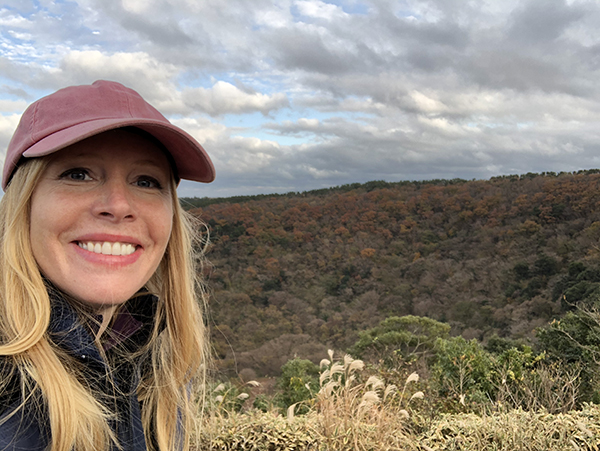
About Jeju Island
Know also as the “Hawaii of Asia,” the largest island of South Korea is located southwest of the Korean peninsula. It is one of the most relaxing vacation spots found in Korea thanks to its unique local atmosphere and beautiful natural environment. The volcanic lava tubes that make up nearly 10% of the island’s area are a designated UNESCO World Natural Heritage Site. Jeju island is also home to:
- largest forest in the world made of one tree species: the 500 to 700 years old bija (nutmeg yew) trees
- volcanic cones
- waterfalls
- Haenyeo, the female divers on UNESCO’s World Heritage List
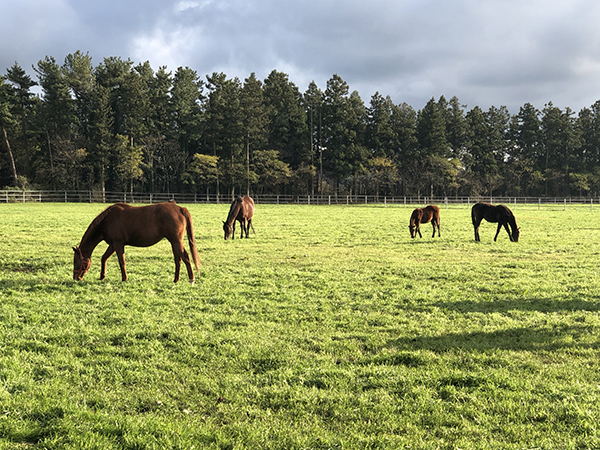
Horses on Jeju Island 
The landscapes of Jeju Island
Day 6: Jeju Island Traditions
8:00 am – Korean Time. Early morning pick up at your accommodation for a hike up Seongsan Ilchulbong Peak.
Seongsan means “fortress hill” in Korean and Ilchulbong means “sunrise peak.” As the name suggests, the peak is famous for its breathtaking sunrise views. It is approximately a 30-minute hike up to the top and many people come at predawn to experience a memorable sunrise.
Exploration of Manjanggul Cave
With a total length of 8,928 meters, Manjanggul Caveis the longest lava tube in the world. The cave is listed as a UNESCO World Heritage, as the shape and topography inside the cave are well preserved. There are three entrances to the cave, but visitors are only allowed to enter by the second entrance and see 1 kilometer of the tube.
The cave looks like a stunning backdrop for a movie, making visitors feel as though they are in an underground world of raw beauty. There is an interesting variety of lava structures inside the cave. In particular, the 7.6-meter high lava column at the end of the section open to the public is known to be the largest in the world. Visitors are advised to bring a jacket as the temperature inside the cave ranges from 11 to 22℃ throughout the year, remaining its cool temperature even during the summer months.
The Haenayo free-divers: a UNESCO awarded practice.
A strong community of women represent a semi-matriarchal society on Jeju Island and have for centuries. Called the Haenyeo, still today, these women, many of whom are now older, free dive in Jeju’s sometimes chilly waters to harvest seafood for their families and communities. During the summer, they work the fields to bring in crops. On UNESCO’s World Heritage List, the Haenyeo continue their practices today and also run a diving school outside of Jeju City.
Show and lunch at the Haenayo’s Kitchen
Enjoy a Show and lunch at the Haenayo’s Kitchen, a performance venue and restaurant where the story of the Haenyeo divers is recounted and travelers can enjoy fresh seafood the Haenywo women are harvesting from the sea. (Available only on Fridays, Saturdays and Sundays)
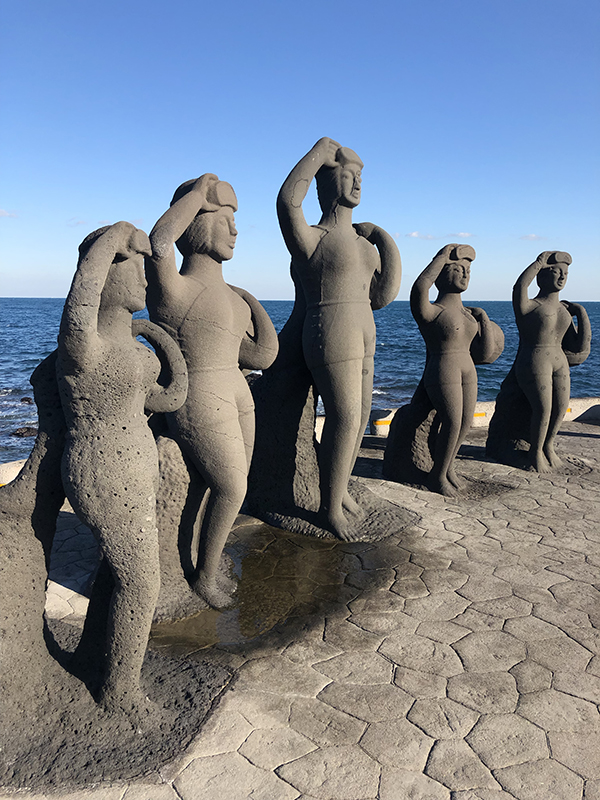
Statue of the Haenyeo on Jeju Island 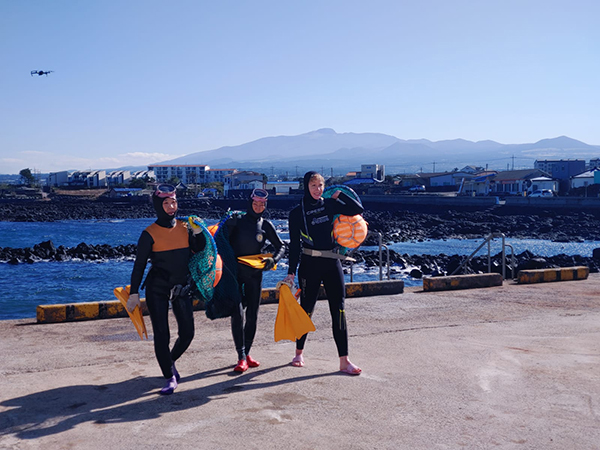
Diving with the Haenyeo on Jeju Island 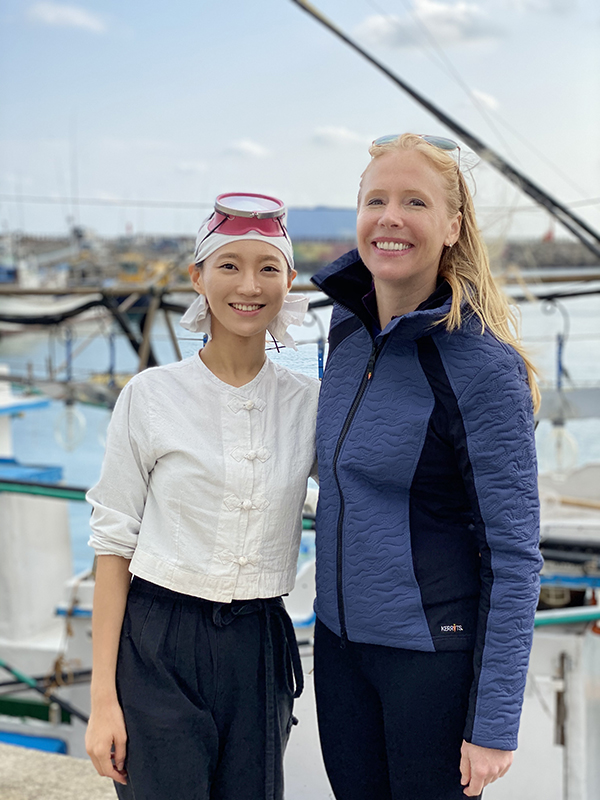
Darley meets one of the women of Haenyeo Kitchen 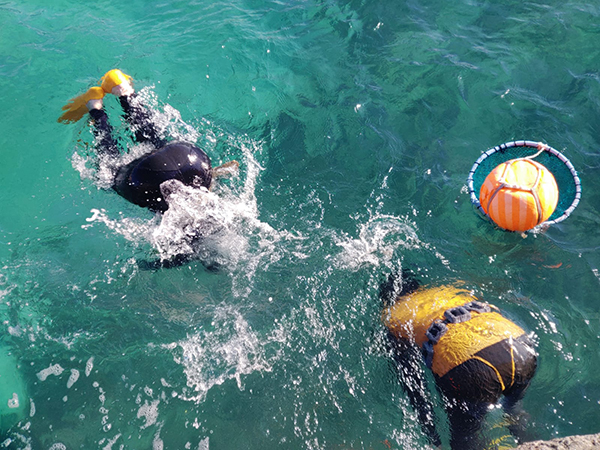
The Haenyeo diving on Jeju Island
Ossuloc Tea Museum
Enjoy a Korean traditional tea class. The building itself is the materialization of a green tea cup. A place of culture where traditions and modern Korea are harmonized. This tea museum has a wonderful shop where you can find award-winning teas to bring back home and tea related products to also try onsite.
Bijarim Forest
Designated Natural Monument No. 374, Bijarim Forest is a group of about 2,800 nutmeg yew trees between 500 and 800 years old. In the past, the trees were harvested for pine nuts, as well as used for the construction of quality furniture and baduk game boards.
In addition to the large colony of nutmeg yew, the forest is also home to many rare orchid species. The trees emit a lot of phytoncide, which is said to strengthen the immune system and boost the natural healing ability of the human body. Nearby attractions include volcanic cones like Abuoreum and Yongnunioruem, perfect for a more energetic walk and a view of Bijarim Forest from above.
Return to your hotel (1 hour drive) and enjoy dinner at the hotel. (not included)
Day 7: Jeju Island Natural Wonders
Morning at leisure on own. Should you want to do more this morning, we recommend making a trip to The Spirited Garden (not included)
The Spirited Garden is home to hundreds of bonsai plants in a natural garden with the theme of oreum (volcanic cone) and water. The history of the garden started in 1963 when Seong Beom-yeong, the founder of the garden, came to Jeju and cultivated the wasteland full of rocks. The garden came into the international spotlight as the beautiful space was created from the wastelands by a single farmer.
The garden is located about 20min away from your hotel. Transportation is not included and will be arranged at additional cost. Entrance tickets not included.
Enjoy a brunch and a unique dessert in the beautiful backdrop by a stunning beach today, followed by a tour of Sanbangsan Mountain.
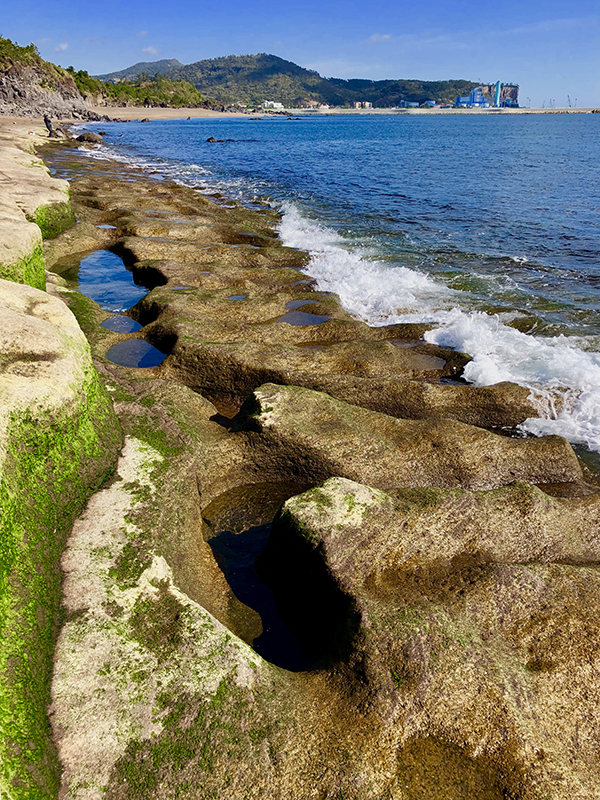
The beaches of Jeju Island in South Korea 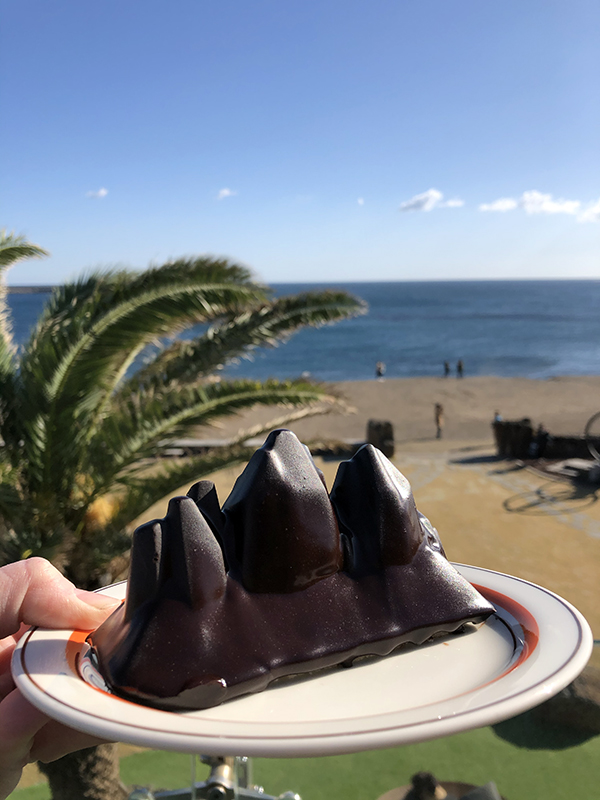
Volcano cake at One and Only Cafe on Jeju Island
*Transfer is included. Brunch is included/ Tour is included
Enjoy some free time this afternoon. Tonight you head to Jeju’s Dongnum Market, the largest and oldest permanent market on Jeju Island, to see what locals eat. This well kept market is a good place to shop for souvenirs and also see some of Jeju Island’s main products, including seafood, black pork and tangerines.
Tour of the indoor market with a guide.
Dinner at a local restaurant (Included)
Day 8: Return to Seoul
Private transfer to Jeju airport and flight to seoul
This morning, check out of your hotel and enjoy a private transfer to Jeju airport and flight to Seoul.
Back in Seoul, we can set you up with a K-Pop dance class. We do warn you, the students are serious and this is all in Korean, but you’ll do fine. Darley did this when she was in Seoul and had a blast! You’ll learn some new moves, get a great workout and we recommend having someone get some footage and photos of you. You’ll be glad you did!
Tea Time in Seoul
Enjoy a stop at the Tteul Gwa Dawon (literally “yard and tea garden”), an up-scale hanok-style tea and coffee house where you can enjoy a tranquil garden in the center of Seoul.
Option 1: Check in at Park Hyatt Seoul (or similar)
Located in the heart of Gangnam, the financial and business district of Seoul, the luxurious 185-room Park Hyatt Seoul hotel occupies a stylish 24-storey modern building, with the hotel lobby located on level 24, and the hotel’s exclusive recreational facilities on the upper levels, affording stunning panoramic views of the city.
Tour of Gangnam and time on own
After lunch, take a tour of Gangnam, which literally means ‘south of the river’. This district in South Korea’s capital lies along the banks of the Han. There’s plenty to do and see in this historically rich, fast-developing neighborhood. Gangnam is known as one of the richest districts in South Korea and is home many department stores, underground shopping centers, and malls. This is where you would find Louis Vuitton, Chanel, Versace and more of designer shops.
Dinner is on your own (we’ll provide recommendations!).
Option 2: Check in at luxury Hanok accommodation
A traditional hanok house or guesthouse gives you a truly unique Korean experience. Many of these traditional houses are former homes of aristocrats, noblemen, and high-ranking government officials. These hanok houses, which are usually found surrounding the palace are now preserved and transformed into guesthouses, restaurant, gallery or cafe.
Day 9: Cooking Class, Spa & Shopping
After breakfast, enjoy some time on own before meeting with your driver-guide in the lobby.
Learn more about traditional culinary arts in South Korea, and follow your cooking instructor to learn how to make kimchi.
While kimchi is a staple of all Korean meals and is already well known among people with plans to visit Korea, there is always room for more knowledge! The best place to learn about this popular fermented food is to learn how to make it, and learn more about its tradition, and the digestive benefits.
The cooking class is followed by Korean traditional course lunch.
Spend the rest of the day at a traditional Korean beauty spa using Korean traditional ingredients. (spa not included, but we can arrange this and have a few options from which you can choose)
Enjoy time on your own and dinner on your own (we’ll again provide recommendations!).
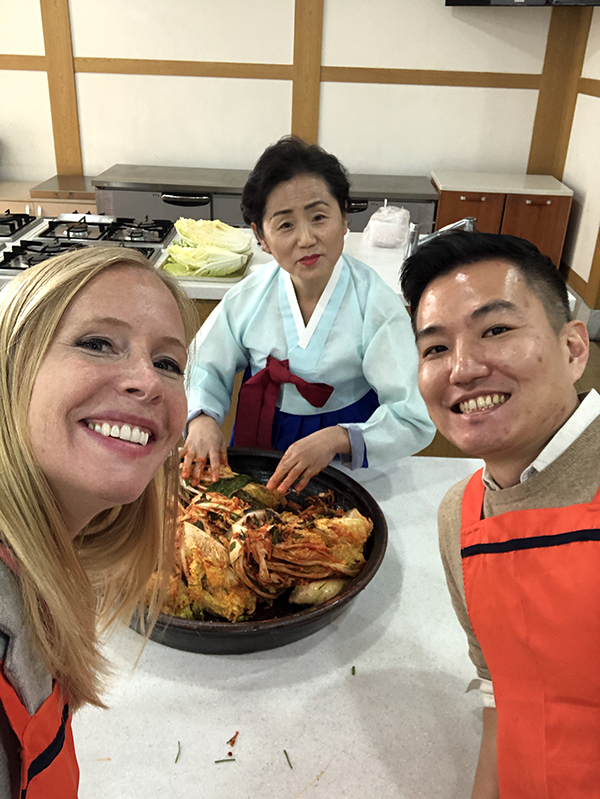
Day 10: Say Good-Bye to Seoul
Check out of your hotel and enjoy a private transfer to the airport.
Trip Prices & Inclusions
10 days/ 9 nights starting at $9,066 USD* per person based on double occupancy
* Daily inclusions listed below. Itinerary pricing based on double occupancy. Prices are subject to fluctuations due to exchange rates at time of payment. Prices and reservations are not guaranteed until a deposit is placed. We are happy to customize this itinerary for you!
INCLUSIONS
Accommodations based on 2 guests
9 NTs total
Meals for 2
Daily breakfast incl. at Temple Stay
Drink package for included meals and mineral water on tours
Day 2 Lunch-Gwangjang market street food
Day 3 Lunch-Included in the DMZ tour
Day 4 Lunch-European course – Dugaheon
Day 4 Dinner-Included in the templestay program
Day 5 Lunch-Traditional course – Gyeongbokgung in Songdo
Day 6 Lunch-Haenyeo’s Kitchen with performance
Day 7 Dinner-Local dinner – Abalone set menu
Activities for 2
DMZ Tour
Activities at the Temple Stay
Seoul City tours per the itinerary
Kimchi Making
Hanbok Experience
Cooking class
Jeju tours per the itinerary
Tdeul Gwa Dawon
One & Only Café
K-Pop Dance Lesson
All entrance tickets during tours
Taxes, Fees, and Gratuities
EXCLUSIONS
International air
Personal expenses
Travel Insurance
Any deviation from the agreed itinerary will be at additional cost


